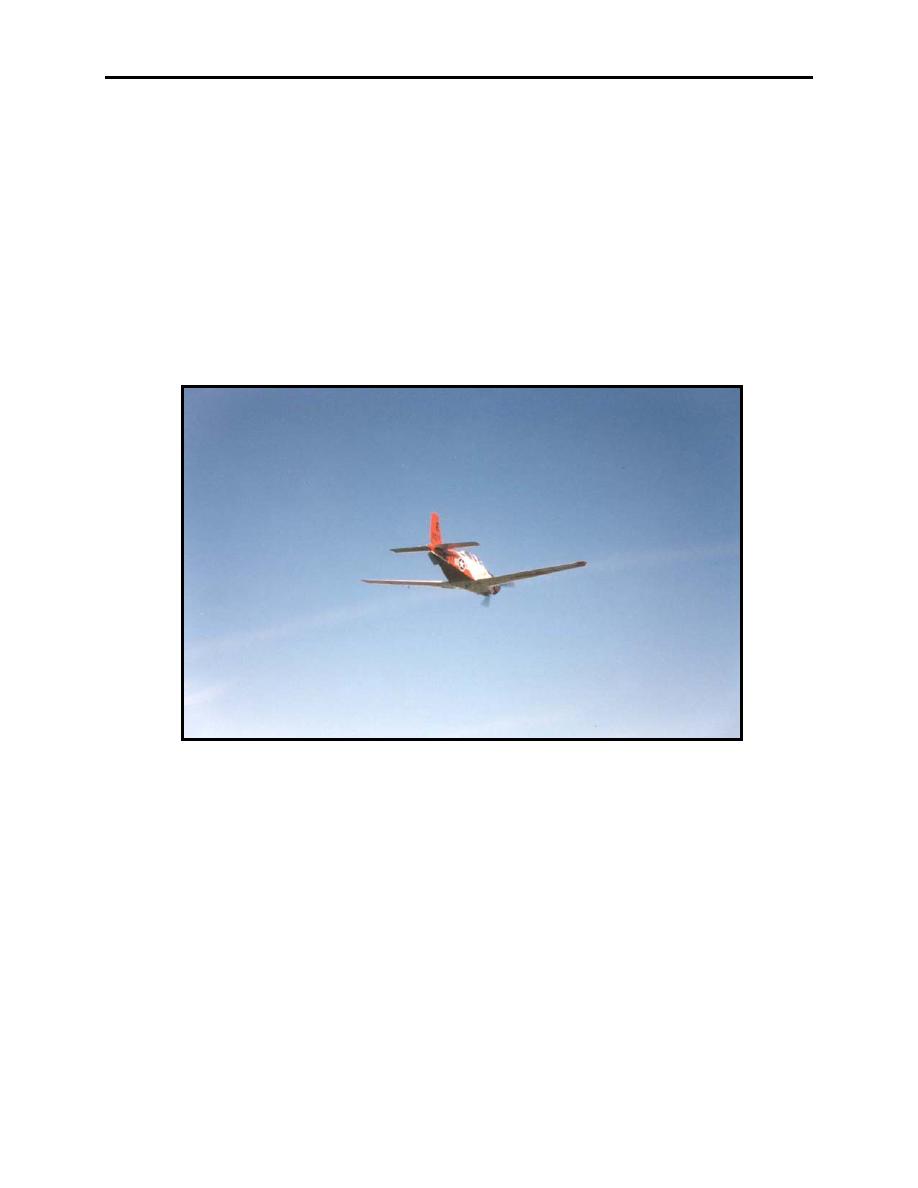 |
|||
|
|
|||
|
Page Title:
Figure 3-1 Initial Running Rendezvous Picture Wing Covering Exhaust Stack |
|
||
| ||||||||||
|
|  T-34C PRIMARY FORMATION FLIGHT TRAINING
CHAPTER THREE
amount to allow Wing a closing advantage during the climbout. Maintain 120 KIAS with this
reduced power setting. If a turn is required prior to the Wingman rejoining, then Lead will use
no more than 20 of bank. As Wing approaches the parade position on the starboard side, Lead
will smoothly set power as required (850 ft-lbs maximum) and continue the departure. Lead
should make all power adjustments at a slow constant rate.
The Wingman. Once safely airborne, adjust the angle of bank as necessary to establish the
aircraft inside Lead's turn, maintaining Lead slightly above the horizon throughout the
rendezvous. When Lead rolls out wings level, there will no longer be the closing advantage
provided by radius of turn so now the joinup will be a function of airspeed differential. Once
Lead is rolled out, maneuver to the starboard side of Lead and put him at the 11 o'clock position
with at least 20 feet of stepdown. The Lead's wing should initially cover the exhaust stack
(Figure 3-1).
Figure 3-1 Initial Running Rendezvous Picture Wing Covering Exhaust Stack
Use power to control the closure rate approaching lead. Closure can be difficult to judge with a
tail aspect, so reference your airspeed indicator to help determine your closure rate. As a rule of
thumb, use about 10 knots per T-34C length as a guide for airspeed closure. In other words, if
Lead is flying 120 KIAS, be no more than 140 knots at two T-34C lengths. Be no more than 130
knots at one T-34C length. Do not exceed 170 knots during the Running Rendezvous.
At approximately three plane lengths out or when you can read the "Navy/Marines" on Lead's
aircraft, utilize coordinated power and control inputs to first move to and then stabilize beneath
the starboard parade position with 20 feet of stepdown (Figures 3-2 and 3-3). In the 20 feet of
stepdown position, the "ventral point" will be over the opposite "cutout," with the "prop
arc" under the "midpoint" of the starboard wing, and the trailing edge of the starboard
SECTION PARADE 3-5
|
|
Privacy Statement - Press Release - Copyright Information. - Contact Us |